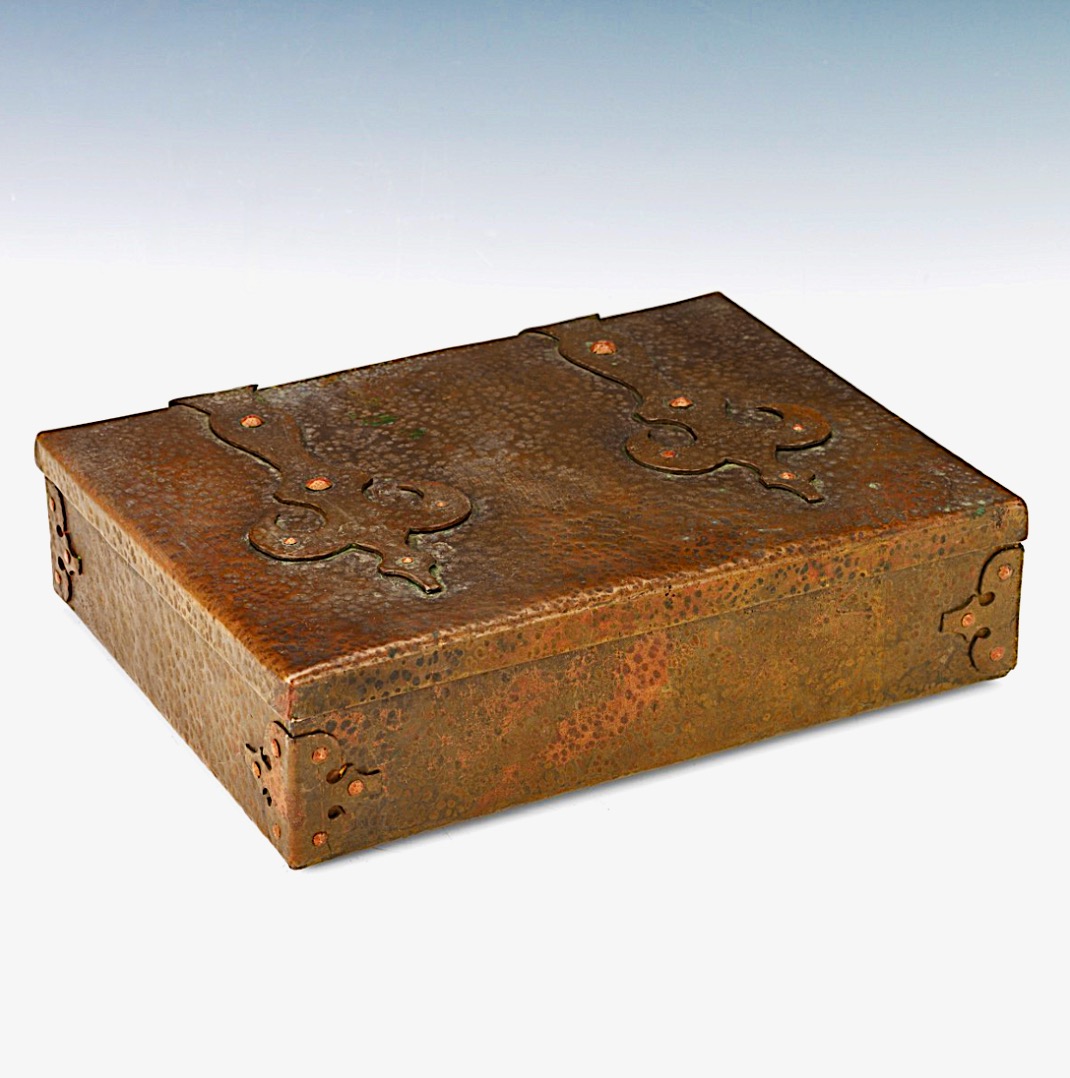

Title: Arts & Crafts Hammered Bronze Mix Metals Casket
Shipping: $29.00
Artist: N/A
Period: 20th Century
History: Art
Origin: North America > United States
Condition: Very Good
Item Date: N/A
Item ID: 1310
Arts and Crafts Hammered Bronze Mix Metals Casket 3 ½" x 11 ¾" x 9" Of rectangular form, bronze mix metals casket box with hinged cover, applied bronze Gothic Revival fittings; unmarked. The Arts and Crafts movement, which emerged in the late 19th century as a reaction against industrialization, celebrated traditional craftsmanship, simple forms, and the use of natural materials. It emphasized the value of handmade objects over mass-produced goods, leading artisans to revive age-old techniques. Among these was the hand pounding of copper, a meticulous and labor-intensive process where artists shaped and decorated copper surfaces using hammers and tools—each strike adding texture and individuality. This method became especially popular for creating decorative copper art boxes, prized for their durability and unique, organic beauty. In what could be seen as a "4G" of the movement—fourth generation artists and makers continue to honor these traditions today, blending historical techniques with modern sensibilities to keep the spirit of Arts and Crafts alive.
The Arts and Crafts movement found a distinctive and influential expression in California in the early 20th century, where it merged with the region’s natural beauty, cultural diversity, and pioneering spirit. Inspired by the British roots of the movement, California artisans and architects embraced handcraftsmanship, honest materials, and harmony with the environment. Visionaries like Charles and Henry Greene in Pasadena elevated the style through their iconic Craftsman homes, while communities such as the Arroyo Seco in Los Angeles became hubs for artists working in wood, metal, and ceramics. The movement in California was less rigid and more experimental than its European counterpart, often blending Spanish, Native American, and Asian design influences. It helped define a uniquely Californian aesthetic—warm, organic, and deeply rooted in nature and individuality—that still resonates in the state’s artistic and architectural landscape today.